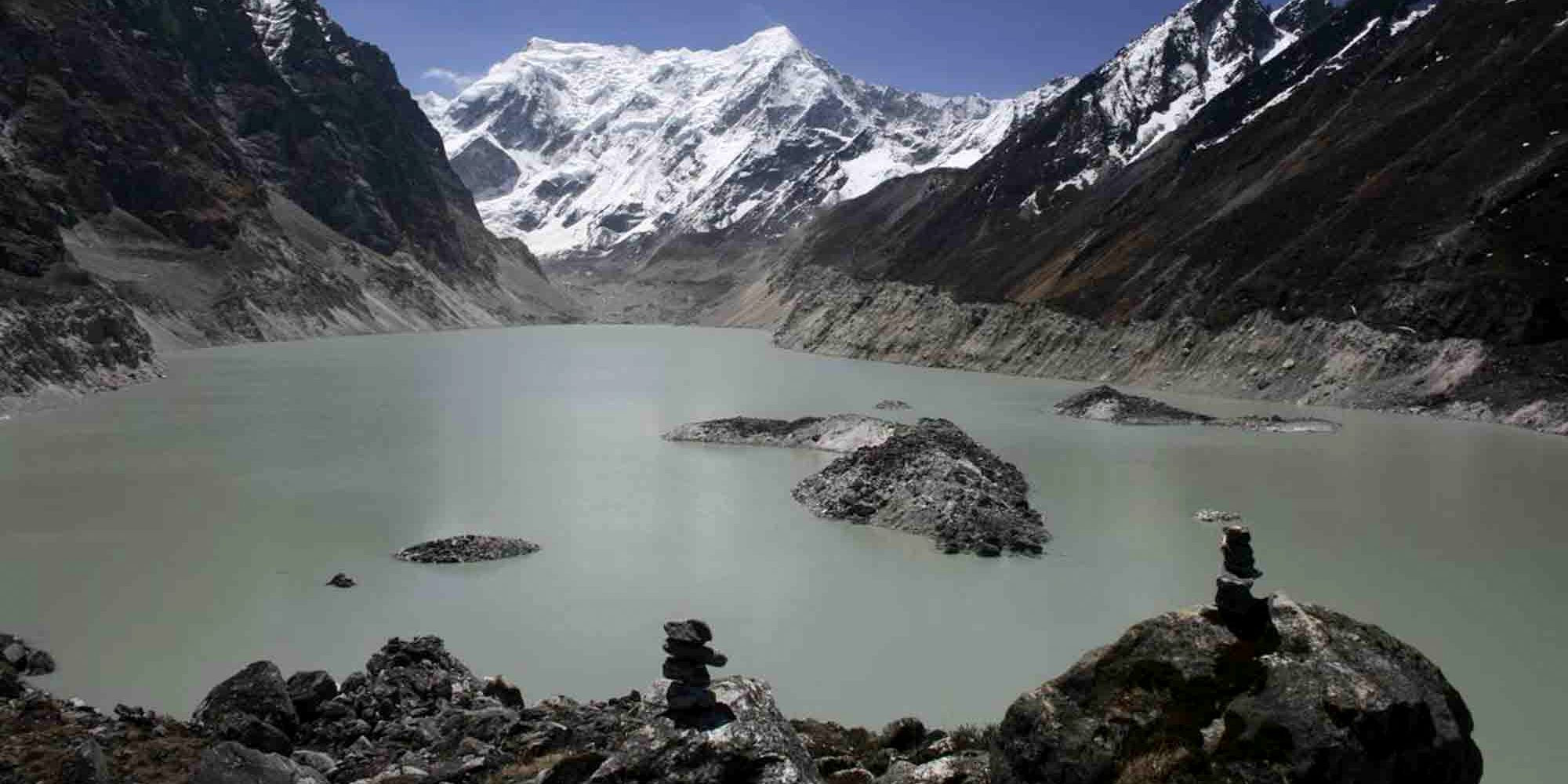Gokyo Lakes
The Gokyo Lakes are a series of six spectacular high-altitude lakes situated in Nepal's Sagarmatha National Park, in the Everest region. Renowned for their stunning beauty, these lakes are amongst the highest freshwater lake systems in the world, ranging from 4,700 to 5,000 meters above sea level.
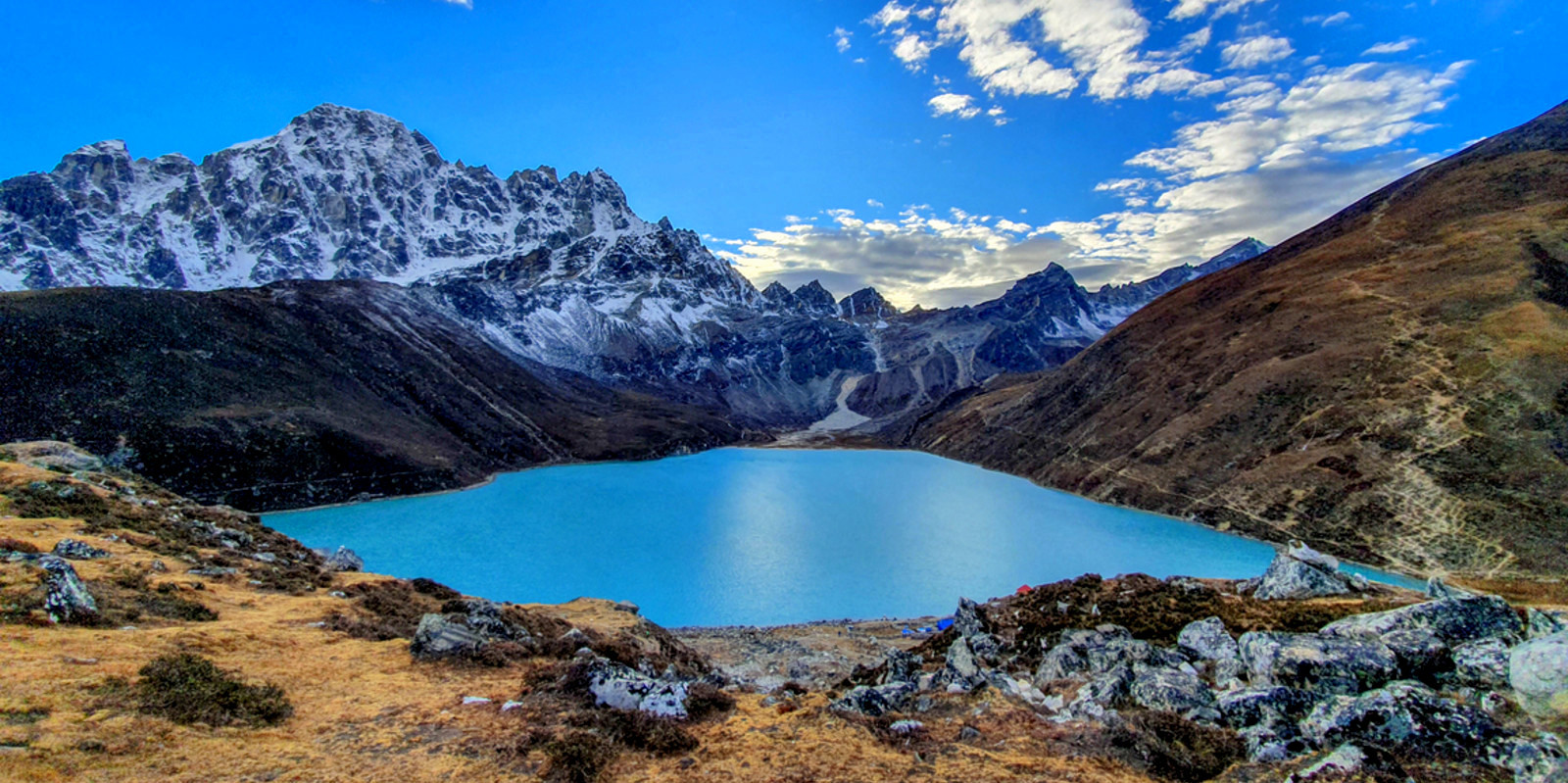
-
Beauty and Significance: Each of the Gokyo Lakes is unique in its beauty. Its vibrant turquoise waters are starkly contrasted against the rugged mountainous backdrop, which includes views of some of the world’s highest peaks, such as Everest, Lhotse, Makalu, and Cho Oyu. The lakes are considered sacred by both Hindus and Buddhists, and thousands of pilgrims visit each year to pay homage during the Janai Purnima festival.
-
Trekking Experience: Trekking to the Gokyo Lakes is an exhilarating experience that is often considered a quieter, albeit equally beautiful, alternative to the traditional Everest Base Camp trek. The route takes trekkers through lush rhododendron forests, over dizzying suspension bridges, and past quaint Sherpa villages, offering breathtaking views and cultural insights along the way.
-
Gokyo Ri: One of the highlights of this trek is the ascent of Gokyo Ri, a peak offering one of the best panoramic views in the region. From the summit, trekkers can gaze upon the sprawling Gokyo lakes on one side and a spectacular Himalayan range on the other, making it a climactic viewpoint.
-
Environmental Concerns: The area around the Gokyo Lakes is sensitive to climate change's impacts. Rising temperatures influence glacier melt and potentially increase the risk of glacial lake outburst floods (GLOFs). Preservation efforts are crucial to maintaining this region's natural beauty and ecological balance.
Choosing Relax Getaways for your trek to the Gokyo Lakes means benefiting from our deep-rooted local knowledge and commitment to sustainable tourism. We offer guided treks that not only enhance your experience with expert insights into the natural and cultural heritage of the area but also ensure that travel practices respect the delicate environment of the Himalayas. Join us to discover the serene beauty and profound tranquility of the Gokyo Lakes—an unforgettable adventure awaits.
Tilicho Lake
Tilicho Lake, located in the Annapurna region of Nepal, is one of the highest lakes in the world, sitting at an altitude of about 4,949 meters (16,237 feet). This lake is a stunning destination, known for its vivid blue waters and the dramatic mountain scenery that surrounds it.
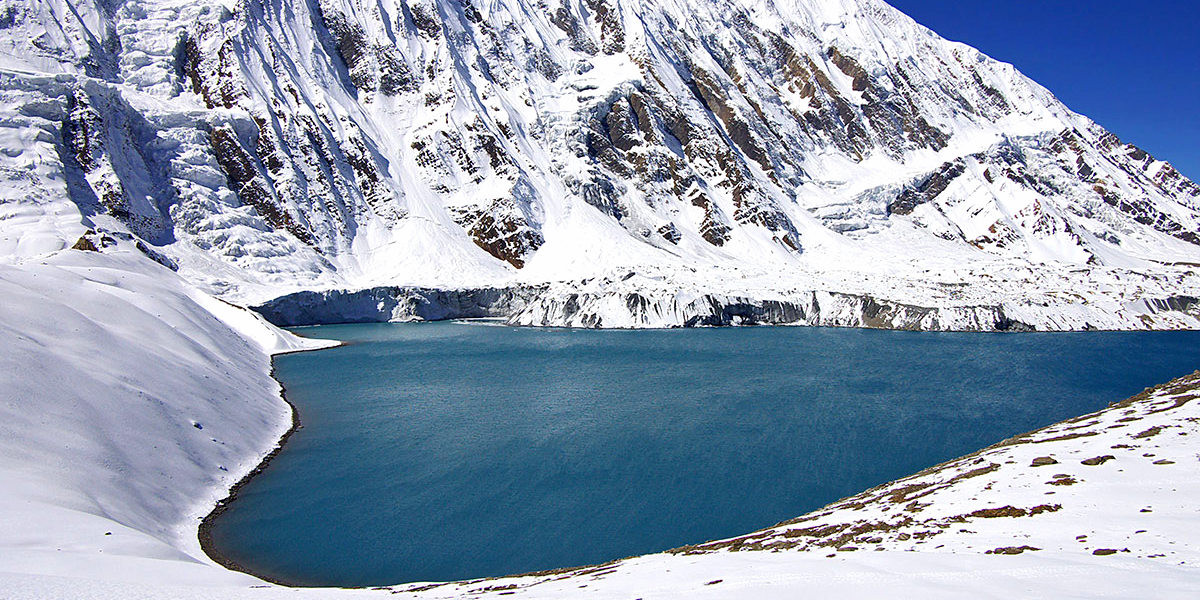
-
Natural Beauty and Trekking Challenge: The journey to Tilicho Lake is as breathtaking as it is challenging, forming a part of the famous Annapurna Circuit trek. This trek takes adventurers through diverse landscapes, from lush paddy fields and subtropical forests to arid cliffs and alpine meadows. The trail to Tilicho Lake itself branches off from the main circuit and heads into a more secluded area, offering trekkers a sense of isolation and unspoiled natural beauty.
-
Cultural Significance: Tilicho Lake holds significant cultural importance to the local communities. It is considered a holy site by both Hindus and Buddhists. Hindu pilgrims from around the world trek to the lake, as it is believed to be the ancient Kak Bhusundi Lake mentioned in the epic Ramayana, where sage Kak Bhusundi is said to have recounted the story of Rama to Garuda.
-
Trekking with Relax Getaways: Opting for Relax Getaways for your trek to Tilicho Lake ensures that you have expert guidance every step of the way. Our experienced guides are knowledgeable about the local culture, geography, and the necessary precautions needed for high-altitude trekking. We ensure that your journey is both safe and enriching, allowing you to fully immerse yourself in the awe-inspiring landscapes and spiritual significance of Tilicho Lake.
-
Environmental Awareness: The fragile ecosystem around Tilicho Lake is susceptible to the impacts of climate change and increased human activity. At Relax Getaways, we are committed to sustainable tourism practices that minimize environmental impact and contribute to the preservation of this pristine area. We encourage all visitors to follow leave-no-trace principles to help maintain the natural beauty of Tilicho Lake for future generations.
A journey with Relax Getaways to explore the serene and sacred waters of Tilicho Lake, where the natural grandeur and cultural richness of the Annapurna region come together in perfect harmony. This trek is not just a physical challenge but also an opportunity to connect with nature and experience profound peace and solitude at one of the highest points on earth.
Imja Tsho
Imja Tsho, also known as Imja Lake, is a high-altitude glacial lake located in the Solukhumbu District of Nepal, near Mount Everest. Situated at an elevation of approximately 5,010 meters (16,437 feet), it is one of the remarkable examples of the dynamic and changing landscapes of the Himalayas due to the effects of climate change.
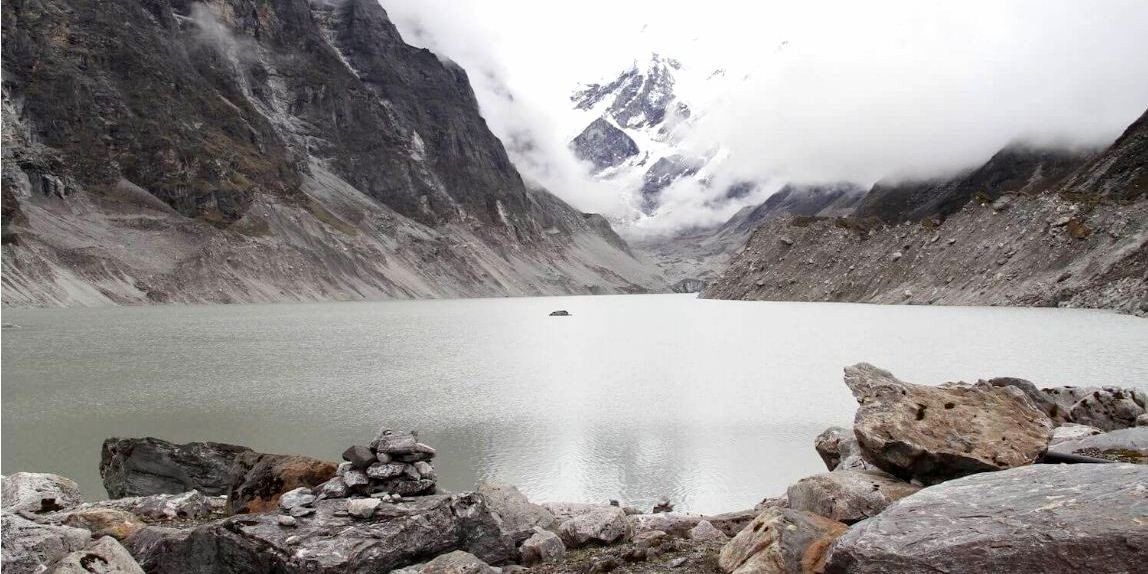
-
Formation and Risk: Imja Tsho was formed in the 20th century as a result of the melting of the Imja Glacier. The lake has been growing steadily, raising concerns over the potential risk of a Glacial Lake Outburst Flood (GLOF), which could have devastating effects on the communities living downstream. Monitoring and research are continuously conducted to assess the stability of the lake and to devise mitigation strategies to protect these vulnerable areas.
-
Trekking to Imja Tsho: Trekking to Imja Tsho is an adventurous journey that takes you deep into the heart of the Khumbu region, home to the world-renowned Sherpa culture and some of the Earth’s highest peaks. The trek not only offers a chance to witness the stark beauty of high-altitude lakes but also provides insights into the impacts of global warming in the Himalayas. The route typically involves passing through the bustling hub of Namche Bazaar, the tranquility of Tengboche Monastery, and the dramatic landscapes of the Everest Base Camp trail before diverting towards Imja Tsho.
-
Importance of Safety and Awareness: At Relax Getaways, we emphasize the importance of Imja Tsho Safety in our treks. Our guides are trained to handle high-altitude hiking and are knowledgeable about the specific risks associated with glacial lakes. We ensure that our clients are well-informed and prepared for the conditions they will face, making safety a top priority on our treks.
-
Commitment to Conservation: Understanding the ecological sensitivity of the region, Relax Getaways is committed to promoting Nepal Ecotourism. We practice and promote responsible travel ethics that contribute to the conservation of the environment and the well-being of local communities. Our treks to Imja Tsho are designed to leave minimal environmental impact while maximizing engagement with and support for local cultures.
Choosing Relax Getaways for your trek to Imja Tsho means opting for a responsible, safe, and enriching travel experience that respects the delicate balance of nature and culture in the Himalayas. Join us to explore this dynamic landscape where nature's power and beauty are on full display, and become part of the effort to preserve these precious environments for generations to come.
Rara Lake
Rara Lake, the largest lake in Nepal, is a stunning expanse of blue water nestled in the remote landscapes of the Mugu District in Karnali Province. Positioned at an altitude of approximately 2,990 meters (9,810 feet) above sea level, Rara Lake is the centerpiece of Rara National Park and offers a distinctly different experience compared to the high-altitude glacial lakes of the Everest and Annapurna regions.
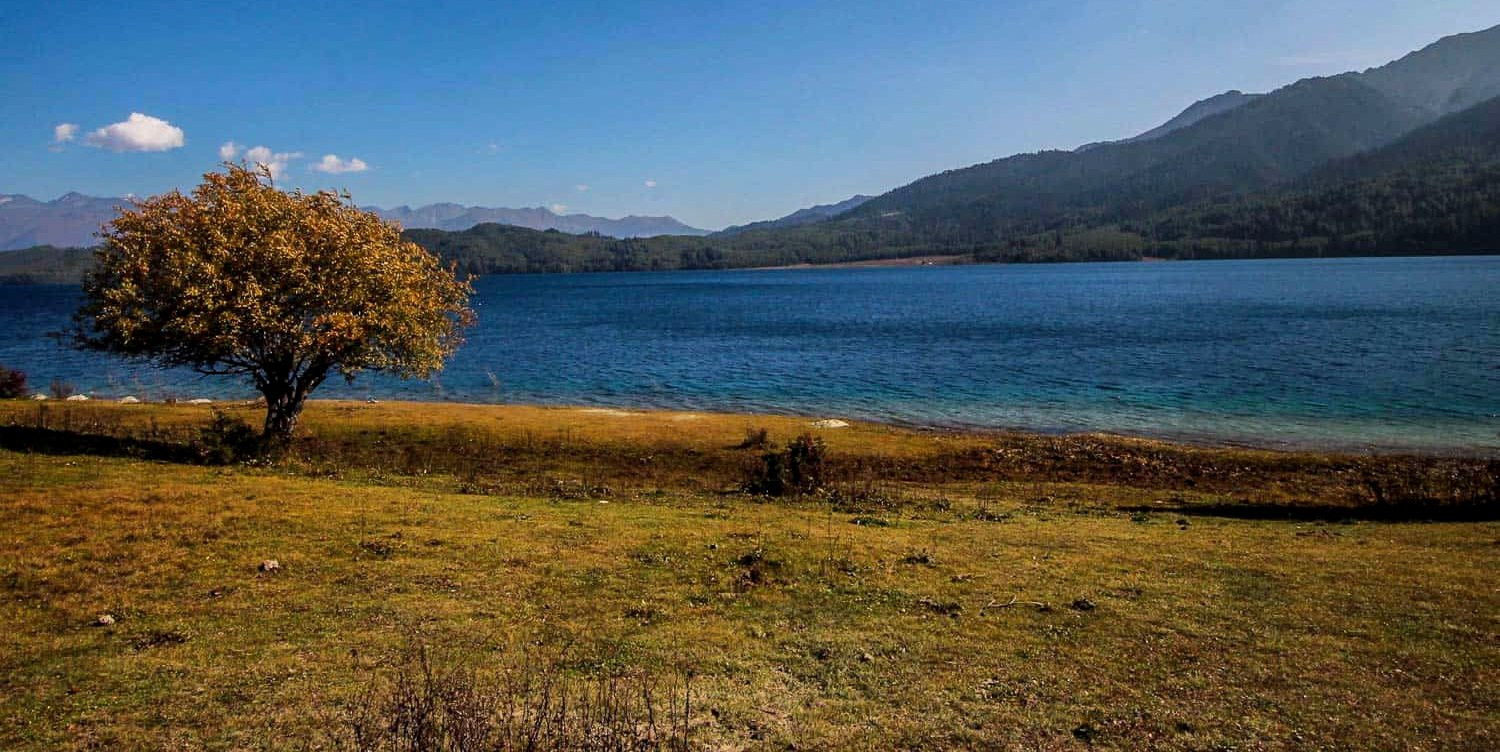
-
Pristine Beauty and Tranquil Setting: The lake spans about 10.8 square kilometers, with crystal-clear waters that reflect the surrounding lush green hills and snow-capped peaks. The tranquil environment of Rara Lake, combined with its breathtaking natural beauty, makes it a perfect destination for those looking to escape the more crowded trekking routes. The area around the lake changes its hues with the seasons, offering vibrant colors that range from deep blue and emerald green in the summer to icy white in the winter.
-
Biodiversity and Eco-Tourism: Rara National Park is a haven for biodiversity, hosting numerous species of flora and fauna, some of which are endemic to the region. The park is home to the Himalayan black bear, red panda, musk deer, and a variety of bird species, making it a fantastic destination for wildlife enthusiasts. Relax Getaways promotes Nepal Ecotourism by organizing guided nature walks and bird watching tours, enhancing visitor awareness and engagement with the region's natural environment.
-
Cultural Insights: Visiting Rara Lake also provides an opportunity to experience the rich cultural heritage of the local communities. The region is inhabited by various ethnic groups, including the Raute and Jumli people, whose traditions and lifestyles remain closely tied to the land. Relax Getaways includes cultural tours that allow travelers to interact with local communities, offering insights into their customs, cuisine, and daily lives.
-
Access and Best Time to Visit: Access to Rara Lake involves a flight from Kathmandu to Nepalgunj followed by another flight to Talcha Airport, after which a short trek leads to the lake. Alternatively, more adventurous travelers can opt for an extended trek from Jumla. The best time to visit Rara Lake is during the spring (April to June) and autumn (September to November) months when the weather is most favorable and the views are clear.
-
Why Choose Relax Getaways: Choosing Relax Getaways for your Rara Lake Visit ensures a seamless, enriching, and responsible travel experience. We are dedicated to sustainable tourism practices that protect the environment and support local communities. Our expert guides are knowledgeable about the ecological and cultural aspects of the area, ensuring that your visit is not just a trip, but a meaningful exploration of one of Nepal’s most beautiful and serene landscapes.
A journey with Relax Getaways to the serene waters of Rara Lake, where nature’s tranquility and cultural richness offer a profound travel experience unlike any other in Nepal.
Tips for Glacial Lakes of Nepal
Visiting the glacial lakes of Nepal is an unforgettable experience, rich in breathtaking natural beauty and unique cultural interactions. If you're planning a trip to these remote and pristine locations, here are some essential tips to ensure a safe, enjoyable, and respectful visit:
-
Acclimatize Properly: Many of the glacial lakes in Nepal are situated at high altitudes. It's crucial to acclimatize to prevent altitude sickness. Plan your itinerary to allow gradual ascent and include acclimatization days.
-
Hire a Local Guide: Navigating the trails and understanding the local culture is much easier with the help of a knowledgeable local guide. Guides not only enhance your safety but also enrich your trekking experience with insights into the local environment and traditions.
-
Pack Wisely: The weather at high altitudes can be unpredictable. Pack layers of clothing, including a waterproof jacket and thermal wear. Also, bring a sun hat, sunscreen, and sunglasses to protect against the sun’s stronger rays at higher elevations.
-
Carry a Map and Compass/GPS: Even if you have a guide, having a map and a compass or GPS is a good safety backup. Trails can sometimes be less marked, and these tools can help you stay on course.
-
Respect Local Customs: Many lakes, such as Gokyo Lakes and Tilicho Lake, hold religious significance. Show respect by following local customs and guidelines, such as not swimming in or polluting the waters.
-
Stay Hydrated and Eat Well: Keep yourself hydrated and have enough high-energy food. At high altitudes, your body will require more water and calories to function properly.
-
Prepare for Emergencies: Have a basic first aid kit, know the symptoms of altitude sickness, and ensure you have travel insurance that covers emergency evacuation.
-
Leave No Trace: Preserve the pristine nature of the glacial lake environments by following leave-no-trace principles. Carry back all your trash, avoid making open fires, and use biodegradable products.
-
Check for Travel Advisories and Permits: Some areas may require special permits to visit, and conditions can change rapidly in mountainous regions. Check for the latest travel advisories and necessary permits before your trip.
-
Be Prepared for GLOFs: Educate yourself about Glacial Lake Outburst Floods (GLOFs) and the signs of potential danger. Although these events are rare, knowing the risk factors can help you stay safe.
Following these tips will help ensure that your visit to Nepal's glacial lakes is not only memorable but also responsible and safe. Enjoy the stunning scenery and unique experiences that these high-altitude lakes have to offer, all while being a considerate and informed traveler.
Ideal Time for Glacial Lakes of Nepal
The ideal time to visit the glacial lakes of Nepal largely depends on the weather conditions and the specific region you plan to explore. Generally, the best times to visit are during the spring and autumn seasons, when the weather is most favorable for trekking and the views are at their clearest. Here's a detailed look at these seasons:
Spring (March to May): Spring is one of the best times to visit the glacial lakes in Nepal:
-
Weather: The weather during spring is generally stable with mild to warm days and clear skies. This season also sees the landscape come alive with blooming rhododendrons and other wildflowers, especially at lower altitudes.
-
Visibility: Spring offers excellent visibility, which is perfect for breathtaking views of the Himalayas reflected in the glacial lakes.
-
Temperature: Temperatures are comfortable during the day for trekking but can still drop significantly at night, especially at higher elevations.
Autumn (September to November): Autumn is another prime time for visiting Nepal’s glacial lakes:
-
Weather: This season is known for its stable weather and minimal precipitation, making it ideal for trekking and outdoor activities.
-
Visibility: Like spring, the skies are usually clear, offering great opportunities for photographers and nature lovers to capture the stunning scenery.
-
Cultural Experience: Autumn also coincides with some of Nepal’s most important festivals, such as Dashain and Tihar, providing visitors with a rich cultural experience.
Other Considerations
-
Summer/Monsoon (June to August): This season is generally less ideal for visiting high-altitude lakes due to the heavy rains, which can lead to slippery trails, leeches, obscured views, and potential travel disruptions. However, some parts of the Upper Mustang and Dolpo regions lie in the rain shadow of the Himalayas and are less affected by the monsoon, making them suitable for trekking even during the monsoon months.
-
Winter (December to February): Winter can be very cold, especially at higher altitudes, which may not be suitable for all trekkers. The paths can be snow-covered, and many lodges may be closed. However, for well-prepared adventurers, winter offers solitude and stunning snowy landscapes.
When planning your trip to the glacial lakes of Nepal, always consider the altitude and your ability to handle varying temperatures and trekking conditions. Each season offers a unique perspective of the lakes and surrounding landscapes, so choosing when to go can also depend on what you hope to get out of your experience, whether it's lush landscapes, cultural festivities, or serene, snowy scenes.
The glacial lakes of Nepal are not only spectacular natural wonders but also profound cultural treasures. These high-altitude lakes, set against the dramatic backdrop of the Himalayas, offer a unique blend of breathtaking scenery, challenging treks, and insightful cultural experiences. Ideal visiting times during the spring and autumn ensure optimal trekking conditions and clear views. As we explore these pristine landscapes, it's vital to embrace sustainable travel practices to help preserve these delicate ecosystems for future generations. A journey to Nepal’s glacial lakes is more than just a trip; it’s an opportunity to witness the sublime beauty of nature and to reflect on our role in protecting it.
FAQs for Glacial Lakes of Nepal
Q: What are the main glacial lakes in Nepal?
A: The main glacial lakes in Nepal include Gokyo Lakes, Tilicho Lake, Imja Tsho, and Rara Lake, each offering unique landscapes and trekking experiences in the Himalayas.
Q: How do I reach the glacial lakes in Nepal?
A: Most glacial lakes in Nepal are accessible via trekking routes. For example, Gokyo Lakes can be reached through the Everest Base Camp trek route, while Tilicho Lake is part of the Annapurna Circuit. Rara Lake, located in a more remote area, can be accessed from Jumla or Surkhet.
Q: What is the best time to visit the glacial lakes in Nepal?
A: The best times to visit the glacial lakes in Nepal are during the pre-monsoon spring months of April to June and the post-monsoon autumn months of September to November. These periods offer clearer skies and more stable weather conditions, ideal for trekking.
Q: Are there any risks associated with visiting glacial lakes in Nepal?
A: Visitors should be aware of risks such as altitude sickness and potential Glacial Lake Outburst Floods (GLOF), especially in lakes like Imja Tsho. Adequate preparation, acclimatization, and local guidance are essential for a safe experience.
Q: Do I need a guide to trek to these lakes?
A: While it is possible to trek independently, hiring a guide is highly recommended for safety reasons and to enhance your understanding of the local culture and environment. Guides can also assist with navigation and provide valuable insights into the area's ecology and history.
Q: What should I pack for a trek to the glacial lakes?
A: Essential items include sturdy trekking boots, layers of clothing to accommodate varying temperatures, a high-quality sleeping bag, a waterproof jacket, sun protection (hat, sunscreen), and a first aid kit. It's also advisable to bring water purification tablets and some high-energy snacks.
Q: Can I camp by the glacial lakes?
A: Camping rules vary by location. While camping is an option in some areas, others may have restrictions or require permits. Always check the current regulations and guidelines set by the national parks or local authorities.
Q: How are the local communities involved with the lakes?
A: Local communities often hold cultural and spiritual ties to the lakes, considering them sacred sites. They are also involved in tourism activities, offering homestays, guiding services, and other forms of hospitality.
For the Nepal tour, please click here.
If you are looking for different kinds of Nepal Tours or Trekking Packages, feel free to contact us.
